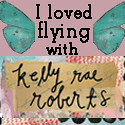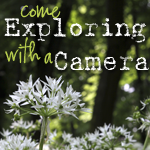Showing posts with label mosaic. Show all posts
Showing posts with label mosaic. Show all posts
Monday, April 11, 2011
Bits and Pieces
I'm over at Mortal Muses today musing on repeating patterns, a perfect opportunity to share a couple of images of the Byzantine mosaics from Ravenna. I think my favorite mosaics are the patterns that decorate the borders and arches, like this one above. I love how these patterns continue infinitely, and how the artist used light and dark colors to give volume to an otherwise flat shape. All this with pieces of glass!
Many of the artistic principles that make a beautiful mosaic are no different than for painting or photography. It's the execution of the mosaic, however, with its little bits and pieces combined into a larger and cohesive whole that makes it so amazing. All works of art are built up from the combination of bits and pieces, but the mosaic makes this obvious in a way that other art forms don't. Maybe that's what makes them special, what makes me look closer to see the details created centuries ago, with tiny bits of glass. I hope you enjoy today's images, both here and over at Mortal Muses.
PS - Did you miss my announcement yesterday? If so, head on over here and check out what you missed!
Monday, November 22, 2010
I Colori di Burano / The Colors of Burano
I mentioned that on this latest trip to Burano I was attracted to color for color's sake, and this little mosaic captures a few of those images, to show you what I meant. Such interesting colors, broken only by texture and a few forms and shadows. Even more interesting, when grouped together, to show the variety of it all! Burano is a candy store for photographers who love color.
When I finished this mosaic, my brain immediately saw a cover page to something, although that wasn't the intent when I started. Maybe a calendar? I made a mental note on this as a project for next year, when I return to the US. For now, there are too many images to capture in Europe!
Along with this mosaic I must give a little thanks to Kim Klassen for the square mosaic template, which she posted in the Photoshop Test Kitchen. I am loving the Test Kitchen! It's a membership site that I joined because I liked the idea of a place where tutorials and things were posted on a regular basis, so I could pop in and learn something new when I had time rather than commit to weeks-long classes. I love Kim's videos, they are bite-sized mini-classes on using Photoshop. This weekend I watched a couple and learned some tips on making a (better) blog button, and using the high pass filter for sharpening. Along with downloading this mosaic template, I downloaded all of her past freebie textures, which she offered up to members. Fantastic! If you are interested in learning more about Photoshop or Photoshop Elements (which I use), I highly recommend visiting Kim's site and checking out her Photoshop Test Kitchen.
Apparently I had time to play this weekend because yesterday, after posting this photo on my blog, I decided that it would look good with some textures. Again, reaching into my toolbox from Kim, I used some of her textures and created this version. I like this one - it conveys the mood and the age of this place better than the original. The "recipe" I used (textures and blending modes) can be found here.
I hope you had time this weekend to play too!
Thursday, September 9, 2010
Exploring with a Camera: Spirals
Spirals are a beautiful shape. They have marvelous curves and convey energy and motion. Not only that, they are a truly efficient form used in nature, and we see them so many places in our every day lives!
While I have captured spirals with my camera countless times, the first place I truly became aware of the spiral form explicitly was in the Barcelona Science Museum. The exhibit on forms found in nature had this to say:
The spiral is a circumference that twists away on the plane that contains it. It is the best way of growing without occupying too much space. It is frequently found in animals when there exists the contradictory need for something massive, voluminous, broad or long that does not affect mobility (horns, tails, tongues, trunks, shells, etc.) and in plants to grow something that will subsequently be unrolled. If we unrolled all the spirals we have at home (kitchen and toilet paper, audio and video tapes, adhesive tape, records, springs....) we would be forced to leave the house, as we would not all fit.Wow! I had never thought of it that way. The typical form in nature that comes to mind for me is the shell (above, from Barcelona Science Museum), but there are so many other places you will see it. Take this photo of a gardenia, for example, from my online friend Barbara:
So gorgeous! Mother nature really knows what she is doing in these things (and so does Barbara). :)
Our man-made world copies nature to use the function of spirals. I don't personally have any photos of toilet paper, but the common spiral staircase, like this one in Verona, is a good example.
And I will spare you the countless spiral staircase photos I have of lighthouses on the Oregon coast! I can't step into one without capturing the wonderful curves and lines of them. (In prepping for this post I learned that technically, this is not a spiral because it is not all on the same plane - it's a helix. But you'll forgive me if I claim artistic license here, won't you?)
Even more than function, humans copy the form of spirals in our everyday world. The Romans used them, as I discovered in this floor mosaic in the British Museum:
The Greeks used them, in their ionic columns. (Thanks to my 9-year-old son, I've relearned which are Doric, Ionic and Corinthian. Ionic have the spirals.) These columns are used all over in architecture, here's just one example I caught in Bath:
And they are used all the time in wrought iron work, as I've noticed here in my travels in Europe. Here's a light post in Bath:
My favorite wrought iron spiral of all time is this railing in Amsterdam. Talk about function following form! What graceful curves...
An architect who used spirals over and over in his work was Antoni Gaudí, in Barcelona. He took much of his inspiration from nature, and this ceiling detail is but one example.
We see spirals every day, even if you haven't noticed it lately. I captured these two images of bus shelter advertisements in different cities on our recent trip to England. Spirals are used in graphic arts to denote natural beauty and to convey energy. They catch your eye and draw you in.
Keep your eye out for spirals around you. Here are a few ideas:
1. Look at home. All of those rolls of paper! And then there are spiral notebooks, springs, even toys (hello, Slinky!). What is there with spirals, sitting right next to you?
2. Look at nature. Flowers, ferns, vines, shells all show spirals. Water moves in spirals, think whirlpools and breaking waves. How can you capture them? What else can you find?
3. Look at architecture. Staircases and wrought iron are two I've mentioned, what others do you see?
4. Look at art and design. Artist have used spirals in their work for thousands of years, and the golden spiral or golden ratio is a fundamental compositional principle (see a short and helpful explanation here). What traditional and modern uses of spirals can you find?
I can't wait to see your spirals! Join in and share them in the Flickr group.
PS - If you want to do more exploring with your camera, visit past posts here.
Labels:
Barcelona,
Bath,
England,
exploring with a camera,
flowers,
mosaic,
shell,
Spain,
spiral,
stairs,
wrought iron
Friday, June 4, 2010
Back from Barcelona
 Barcelona is... architecture and color and sangria and Mediterranean breezes and Gaudi and mosaic and art and a wonderful place to spend a long weekend. We had a slow start to our weekend when our flight was cancelled Friday night. We were able to get a new flight early Sunday morning and back Thursday morning so we still had 4 days there to explore and enjoy. I am soooo glad we didn't just throw in the towel when our flight was originally cancelled, because Barcelona is a wonderful city and worth the time to visit.
Barcelona is... architecture and color and sangria and Mediterranean breezes and Gaudi and mosaic and art and a wonderful place to spend a long weekend. We had a slow start to our weekend when our flight was cancelled Friday night. We were able to get a new flight early Sunday morning and back Thursday morning so we still had 4 days there to explore and enjoy. I am soooo glad we didn't just throw in the towel when our flight was originally cancelled, because Barcelona is a wonderful city and worth the time to visit. This first image from Barcelona is a mosaic by Gaudi, in Park Guell. Gorgeous. I loved this method of broken tile mosaic, so colorful and random. I'm going to enjoy going through these pictures!
By the way, I should show you what I had to do to get this shot:
 A new level I'm will to go to for my photos... down onto the floor! Thanks to my husband Patrick for capturing this "behind the camera" shot.
A new level I'm will to go to for my photos... down onto the floor! Thanks to my husband Patrick for capturing this "behind the camera" shot.
Subscribe to:
Posts (Atom)
































